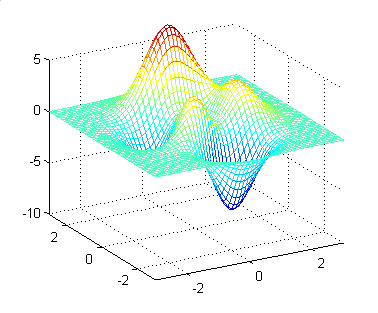|






| |
 | Here are some simulations I did for registration of
3-D Shapes
 | This model is proposed in P. J. Besl
and N. D. McKay. "A method for registration of 3-d shapes",
IEEE Trans. Pat. Anal. and Mach. Intel. 14(2), pp 239-256, Feb 1992 |
 | The method handles the full six degrees of freedom
(rigid transformation) and is based on the iterative closest point
algorithm to register two 3-D shapes. |
 | The point set A0 with M points from the data shape and
the model shape B with N points are given. Let T0 be the initial
estimate of the rigid transformation. Step 1-3 are applied for i =
1,2,3,...until convergence within a tolerance.
-
compute the closest point in B for each point in A(i)
= T(i-1)A(i-1) (use kdtree to accelerate the speed)
-
compute the new registration T(i) (rigid
transformation) that minimizes the mean square error between point
set A and its closest point set.
Apply registration to A(i).
|
 | The first example register the red data set and the
blue data set. (This is exactly the first example given in the paper) |

 | The second example: I use Delaunay triangulation and
peaks function in matlab to generate the data set A (left) and mesh to
generate the data set B (right). The registration result is shown in the
picture in the bottom. |
|
 

|